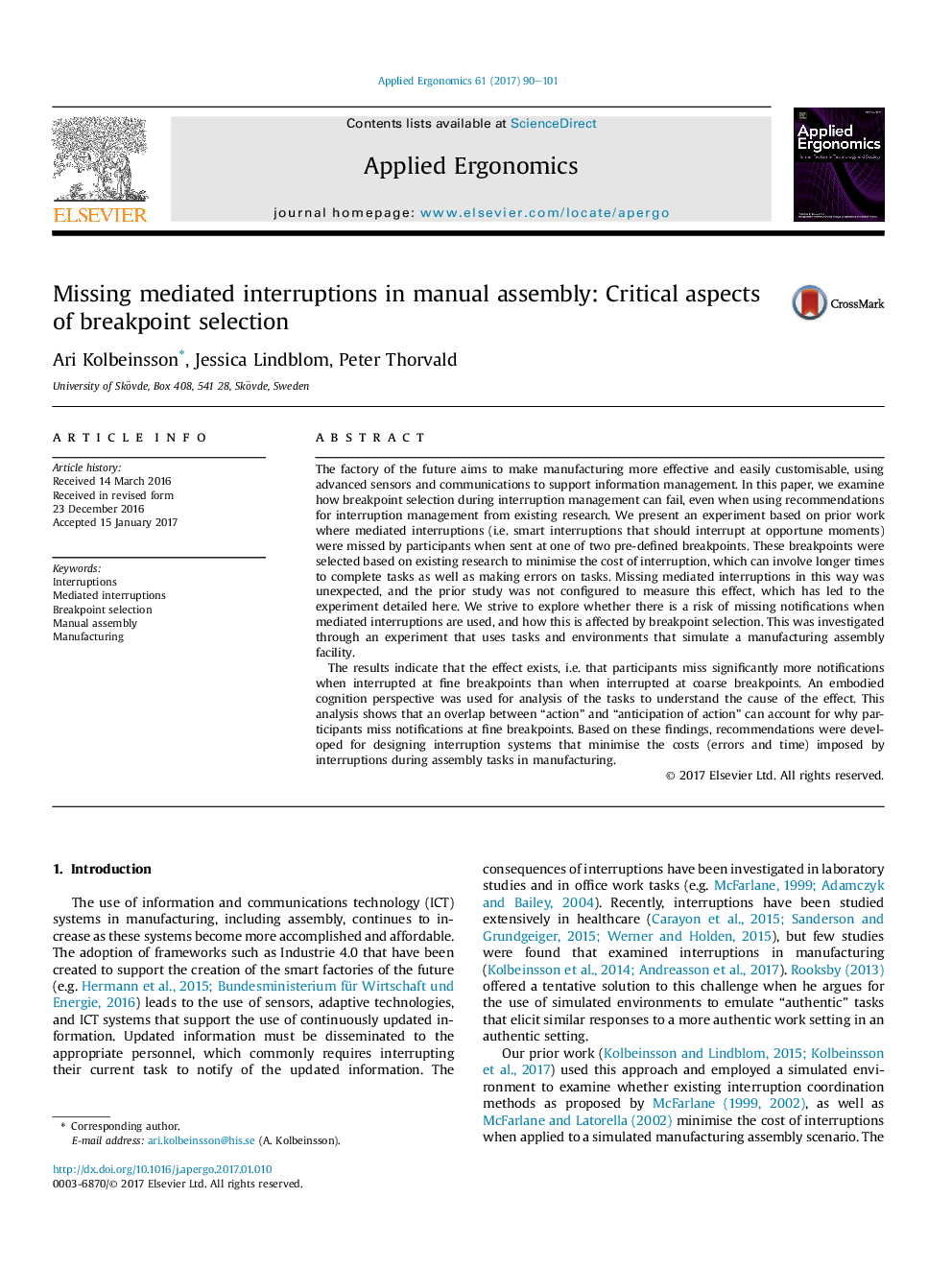| Article ID | Journal | Published Year | Pages | File Type |
|---|---|---|---|---|
| 4972022 | Applied Ergonomics | 2017 | 12 Pages |
Abstract
The results indicate that the effect exists, i.e. that participants miss significantly more notifications when interrupted at fine breakpoints than when interrupted at coarse breakpoints. An embodied cognition perspective was used for analysis of the tasks to understand the cause of the effect. This analysis shows that an overlap between “action” and “anticipation of action” can account for why participants miss notifications at fine breakpoints. Based on these findings, recommendations were developed for designing interruption systems that minimise the costs (errors and time) imposed by interruptions during assembly tasks in manufacturing.
Related Topics
Physical Sciences and Engineering
Computer Science
Human-Computer Interaction
Authors
Ari Kolbeinsson, Jessica Lindblom, Peter Thorvald,
